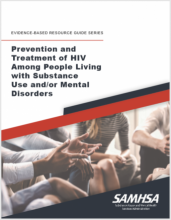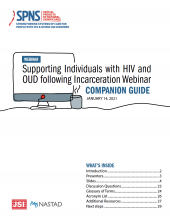
This guide offers considerations for how state agency staff can develop and maintain an accessible, HIV and opioid use disorder (OUD) service inventory. This guide can be used by state agency HIV and OUD staff to:



This guide offers considerations for how state agency staff can develop and maintain an accessible, HIV and opioid use disorder (OUD) service inventory. This guide can be used by state agency HIV and OUD staff to:
In response to an increased risk of overdose, several communities in the U.S. are considering establishing spaces for people to use substances safely.
The growing opioid crisis across the United States has resulted in an increase in new HIV diagnoses.
This month’s Connecting Care episode is the second in a two-part series about treatment for Hepatitis C Virus (HCV) among people with opioid use disorder.
This tool aims to assist HIV primary care teams that work in a range of clinical settings to develop and provide enhanced integration of behavioral health (BH) services.
This month’s Connecting Care episode is the first in a two-part series about treatment for Hepatitis C Virus (HCV) among people with opioid use disorder.
This discussion guide is intended to elicit a comprehensive and concrete conversation about language, stigma, and discrimination as a means of strengthening care systems and ensuring that people who seek care for HIV and/or substance use disorders, including opioid use disorder, are treated with
This month’s Connecting Care episode continues the conversation about barriers to methadone treatment for patients, stigma, and what we can learn from other countries to advance policy and practice for methadone in the US.
This tool focuses on the role of stigma at the intersection of HIV and OUD systems, and introduces opportunities for intervention at the systems level.
This month’s Connecting Care episode discusses the challenges associated with entering and staying in methadone treatment programs and opportunities to improve treatment experiences for all.